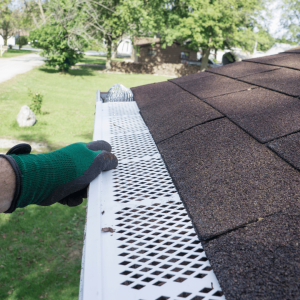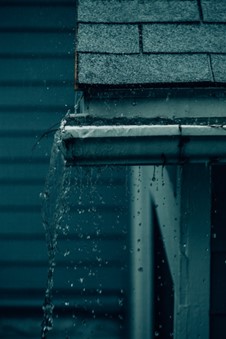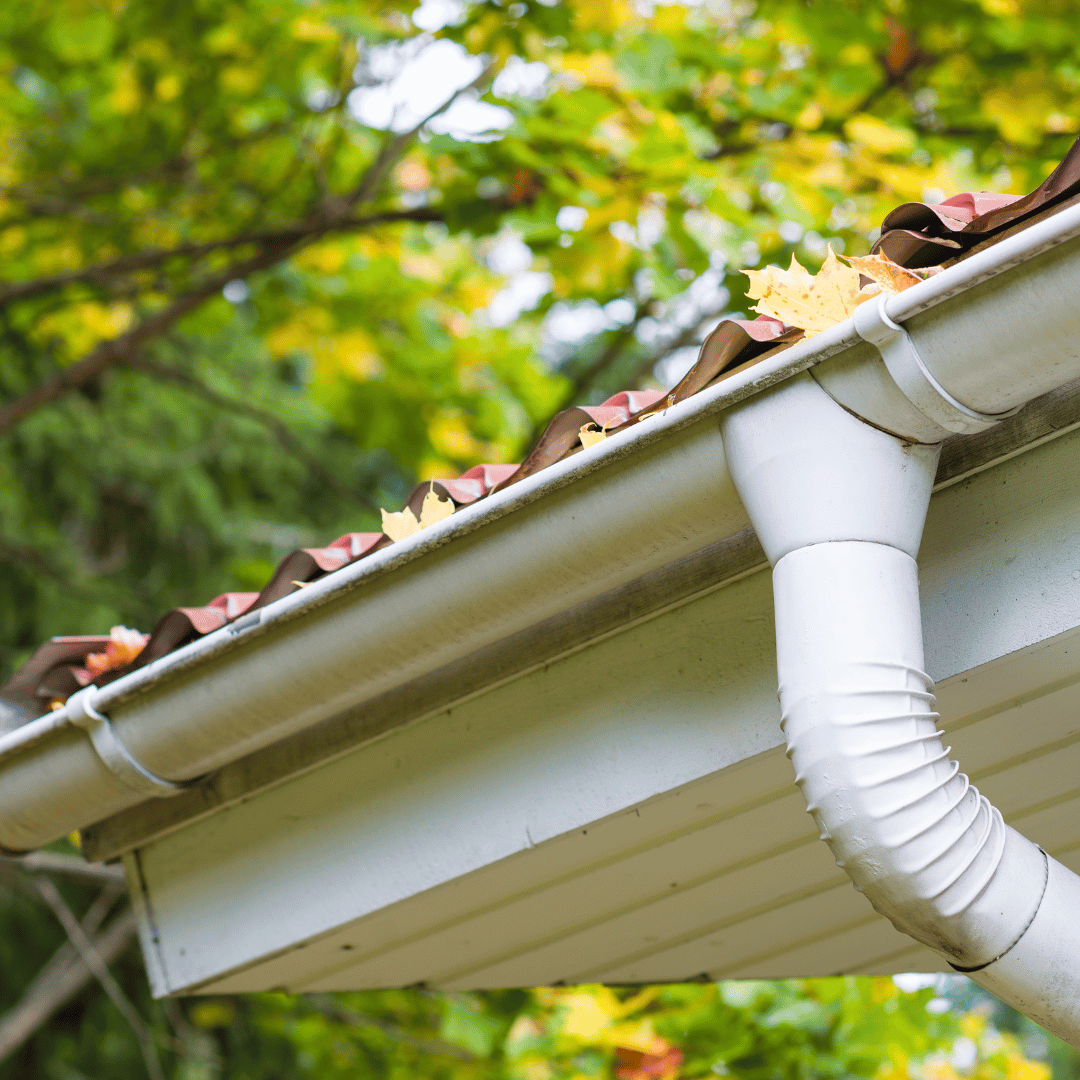
Essential Guide to Gutter Guards Cleaning: Tips and Best Practices
Gutter guards are a valuable investment for maintaining your home’s exterior and safeguarding your gutters from debris. By preventing leaves, twigs, and other materials from clogging your gutters, they play a crucial role in preventative home maintenance. However, even with gutter guards in place, regular cleaning is necessary to ensure they continue to function effectively and protect your home from water damage.
In this article, we’ll delve into the essential aspects of gutter guards cleaning. We’ll discuss how often you need to clean them, effective methods for doing so, and common issues such as clogs and water overflow. Understanding these key elements will help you integrate gutter guard maintenance into your exterior home maintenance routine, ensuring that all components of your home’s drainage system are in optimal condition. Whether you’re looking to improve the performance of your gutter guards or prevent potential issues, this guide provides valuable insights for maintaining your home efficiently and avoiding costly repairs.
How Often Do Gutter Guards Need to Be Cleaned?
Maintaining clean gutter guards is essential for ensuring that they perform effectively. Here’s what you need to know about the frequency of cleaning:
Recommended Frequency
- General Guidelines: It’s generally recommended to clean your gutter guards at least once or twice a year. This schedule helps to remove debris that may accumulate over time and ensures that your gutters remain free-flowing.
- Routine Checks: In addition to scheduled cleanings, it’s a good idea to perform routine checks, especially after heavy storms or periods of high leaf drop.
Factors Affecting Cleaning Schedule
- Local Environment: The frequency of cleaning may vary based on your location. For instance, homes surrounded by large trees or in areas with frequent storms may require more frequent cleaning.
- Type of Gutter Guards: The design and material of the gutter guards can also impact how often they need cleaning. Some types are more prone to collecting debris and may need more regular attention.
Integration into Home Maintenance
- Routine Maintenance: Incorporate gutter guard cleaning into your overall exterior home maintenance plan. Regular maintenance helps to prevent potential issues and ensures that all aspects of your home’s drainage system are in good working order.
- Preventative Measures: By keeping up with gutter guard cleaning, you help prevent clogs and water damage, making it a key component of preventative home maintenance.
Regularly maintaining your gutter guards as part of your home care routine helps to extend their lifespan and maintain their effectiveness, ultimately saving you from more costly repairs down the line.
How to Clean Out Gutter Guards
Effective cleaning of gutter guards is essential to ensure they function properly and prevent potential blockages. Here’s a step-by-step guide on how to clean out your gutter guards:
Safety Precautions
- Use a Stable Ladder: Ensure you use a sturdy, stable ladder when accessing high areas. For added safety, have someone hold the ladder while you work.
- Wear Protective Gear: Equip yourself with gloves and safety goggles to protect against falling debris and dirt.
Cleaning Tools and Methods
- Leaf Blower: A leaf blower is highly effective for removing loose debris from the surface of the gutter guards. Use it on a low setting to avoid blowing debris into the gutters.
- Hand Broom: For a more targeted approach, use a hand broom with soft bristles to sweep off dirt and smaller particles.
- Garden Hose: After removing the bulk of the debris, use a garden hose with a gentle spray to rinse the gutter guards. This helps to wash away any remaining dirt and ensures that water flows freely through the gutters.
- Avoid High Pressure: Be cautious with high-pressure settings on hoses or power washers, as these can damage the gutter guards or force debris further into the system.
Inspecting After Cleaning
- Check for Damage: After cleaning, inspect the gutter guards for any signs of damage or wear. Look for cracks, loose sections, or areas where debris might still be accumulating.
- Ensure Proper Function: Test the flow of water through the gutters to ensure that they are draining correctly. If you notice any issues, address them promptly to prevent further complications.
By following these steps, you can effectively maintain your gutter guards and ensure that they continue to protect your home as part of your preventative home maintenance routine. Keeping your gutter guards clean not only enhances their performance but also contributes to the overall health of your home’s drainage system.
Can Gutters Get Clogged with Gutter Guards?
While gutter guards are designed to prevent debris from entering and clogging your gutters, they are not entirely foolproof. Understanding how clogs can still occur and how to address them is crucial for maintaining an effective drainage system.
Possible Causes of Clogs
- Debris Accumulation: Over time, fine debris, such as silt or pine needles, can bypass the guards and accumulate in the gutters. This can be especially problematic if the gutter guards have larger openings.
- Improper Installation: If gutter guards are not installed correctly, gaps or misalignments can allow debris to enter the gutters. This may lead to clogs despite having guards in place.
- Overflowing Guards: In heavy rainfall or if the guards are clogged with debris, water can overflow and bypass the guards, leading to gutter clogs.
Maintenance Solutions
- Regular Cleaning: Even with gutter guards, periodic cleaning is necessary to remove any debris that may accumulate on or around the guards. This helps to prevent blockages and ensures that the system functions properly.
- Inspection and Adjustment: Regularly inspect your gutter guards to ensure they are properly aligned and free from damage. Adjust or repair any issues to prevent debris from entering the gutters.
- Professional Help: If clogs persist or if you notice significant problems, consider hiring a professional for a thorough inspection and maintenance. They can address more complex issues and ensure that your gutter guards are functioning as intended.
Role in Preventative Home Maintenance
- Integrating into Routine Maintenance: Incorporating gutter guard cleaning and inspection into your exterior home maintenance routine is essential for effective preventative home maintenance. Regular maintenance helps to prevent issues before they become major problems, ensuring the long-term functionality of your gutter system.
By understanding and addressing the potential causes of clogs, you can better maintain your gutter guards and ensure that your gutters remain clear and functional. This proactive approach is key to preserving the health of your home’s drainage system and avoiding costly repairs.
How Do You Sweep Off Gutter Guards?
Sweeping off gutter guards is an essential part of maintaining their effectiveness and ensuring that they continue to protect your gutters. Here’s how to do it properly:
Sweeping Techniques
- Use a Soft Brush: Opt for a soft-bristled brush to avoid damaging the gutter guards. A hand broom or a brush specifically designed for cleaning gutters works well. Gently sweep off any loose debris from the surface of the guards.
- Leaf Blower: A leaf blower can be a quick and effective tool for removing leaves and other debris. Use it on a low or medium setting to avoid blowing debris into the gutters. Move the blower slowly and methodically to ensure thorough cleaning.
- Vacuum Attachment: Some homeowners use a vacuum with a hose attachment to suck up debris from the gutter guards. This method can be particularly useful for removing small particles and fine debris.
Combining Methods
- Initial Sweep: Start by using a brush or leaf blower to remove the bulk of the debris.
- Follow-Up Rinse: After sweeping, use a garden hose to rinse the area and remove any remaining dirt. This step ensures that debris that may have settled or is stuck in crevices is washed away.
- Check for Residual Debris: After sweeping and rinsing, inspect the gutter guards to ensure that all debris has been removed and that there are no clogs or blockages.
Importance of Regular Sweeping
- Preventing Build-Up: Regular sweeping helps to prevent the build-up of debris that can lead to clogs or reduce the effectiveness of the gutter guards.
- Enhancing Gutter Performance: Keeping the gutter guards clean ensures that water flows freely into the gutters and away from your home’s foundation, which is crucial for effective gutter cleaning and overall preventative home maintenance.
Incorporating these sweeping techniques into your routine maintenance will help keep your gutter guards in optimal condition and contribute to the overall health of your home’s drainage system.
Why Does Water Run Over My Gutter Guards?
Water running over gutter guards can be a sign of various issues that need addressing to ensure your gutter system functions properly. Here’s why this might happen and how you can address it:
Common Causes
- Debris Accumulation: Over time, debris such as leaves, twigs, and dirt can accumulate on the surface of the gutter guards. This build-up can obstruct the flow of water, causing it to overflow.
- Improper Installation: If gutter guards are not installed correctly, gaps or misalignments can allow water to bypass the guards and overflow. This can happen if the guards are not fitted snugly against the gutters or if they are misaligned.
- Clogged Downspouts: Even if the guards are clean, a blockage in the downspouts can prevent water from draining properly. This can cause water to back up and overflow the gutter guards.
- Overflow During Heavy Rain: During intense rainfall, gutter guards may become overwhelmed by the volume of water. If the guards are not designed to handle high water flow, they might allow some water to spill over.
Preventative Measures
- Regular Cleaning: Ensure that you clean your gutter guards regularly to prevent debris build-up. This helps maintain proper water flow and reduces the risk of overflow.
- Check Installation: Periodically inspect the installation of your gutter guards to ensure they are properly aligned and securely fitted. Adjust or repair any issues as needed.
- Maintain Downspouts: Regularly check and clean your downspouts to ensure they are free from blockages. Proper maintenance of downspouts is essential for effective water drainage.
- Upgrade Guards if Necessary: If you experience frequent overflow during heavy rain, consider upgrading to gutter guards designed to handle higher water flow. Consult with a professional to select the best option for your home’s needs.
Role in Preventative Home Maintenance
- Integrating into Routine Checks: Addressing water overflow issues should be part of your overall exterior home maintenance routine. Regular inspections and maintenance help prevent more serious problems and ensure the long-term functionality of your gutter system.
- Protecting Your Home: By preventing water overflow, you protect your home’s foundation and exterior from potential water damage, contributing to effective preventative home maintenance.
Understanding and addressing the causes of water overflow can help you maintain an efficient gutter system and avoid costly repairs. Regular upkeep of your gutter guards and related components ensures that your home remains protected from water damage.
Should I Remove Gutter Guards in Winter?
Deciding whether to remove gutter guards during the winter months depends on various factors, including local climate conditions and the type of gutter guards installed. Here’s what you need to consider:
Pros of Removing Gutter Guards in Winter
- Preventing Ice Dams: In areas with heavy snowfall, removing gutter guards can help prevent the formation of ice dams. Ice dams can form when snow and ice block the gutters, leading to potential damage from water backing up under the roof.
- Ease of Cleaning: Without gutter guards, it may be easier to clear out snow and ice that can accumulate in the gutters. This can help maintain proper drainage and prevent water damage.
Cons of Removing Gutter Guards in Winter
- Increased Debris Entry: Removing gutter guards can allow leaves, twigs, and other debris to enter the gutters, potentially leading to blockages. This can counteract the benefits of having gutter guards in the first place.
- Increased Maintenance: Without guards, you may need to perform more frequent cleanings and inspections during the winter months to ensure that gutters remain clear and functional.
Alternative Solutions
- Heated Gutter Guards: Consider installing heated gutter guards or heating cables if you live in a region with heavy snowfall. These can help prevent ice build-up and maintain proper drainage without needing to remove the guards.
- Regular Inspections: If you choose to keep the gutter guards in place during winter, ensure regular inspections to check for ice build-up or other issues. This can help you address problems before they become significant.
Integrating into Home Maintenance
- Part of Preventative Home Maintenance: Whether you choose to remove the gutter guards or keep them in place, it’s important to incorporate this decision into your overall exterior home maintenance plan. Regular maintenance and monitoring during the winter months are key to avoiding water damage and ensuring that your home remains protected.
- Consult with Professionals: If you’re unsure whether to remove or keep your gutter guards during winter, consult with a professional. They can provide advice tailored to your specific climate and gutter system needs.
Deciding to remove gutter guards during winter should be based on your local weather conditions and the specific needs of your home. Balancing ease of maintenance with effective protection will help you maintain a functional gutter system throughout the year.
Gutter guards play a crucial role in maintaining the efficiency of your gutter system by preventing debris from causing clogs. However, like any component of your home’s maintenance system, they require regular care and attention to function optimally.
In this article, we’ve explored various aspects of gutter guards cleaning, from understanding why water might overflow from your guards to the pros and cons of removing them during winter. Proper cleaning techniques, regular inspections, and addressing any issues promptly are essential steps in ensuring your gutter guards continue to protect your home effectively.
Incorporating these practices into your preventative home maintenance routine will help you avoid costly repairs and maintain the health of your home’s drainage system. Remember that gutter guard maintenance is just one aspect of your broader exterior home maintenance strategy. Alongside gutter cleaning, pressure washing, window washing, and dryer vent cleaning contribute to the overall well-being of your home.
By staying proactive and attentive to your gutter guards’ needs, you can ensure they perform their job efficiently, keeping your gutters clear and your home protected. For comprehensive home care and to address all those “honey-do” items on your list, consider professional services like those offered by HomeSmiles. This approach helps you avoid potential issues down the line and keeps your home in top condition.
Stay vigilant with your gutter guard maintenance and integrate these practices into your home’s regular upkeep. Your efforts will not only enhance the performance of your gutters but also contribute to the longevity and safety of your home.
- Protecting Your Property: Why the Right Cleaning Method Makes All the Difference
- The #1 Thing That’s Dulling Your Curb Appeal (And How to Fix It)
- How Maintenance Bundles Provide Peace of Mind for Busy Small Business Owners and Facility Managers
- Essential vs. Complete Home Packages: Choosing the Right Preventive Care for Your Property
- How a Simplified Service Model Benefits Both Homeowners and Franchisees Alike


